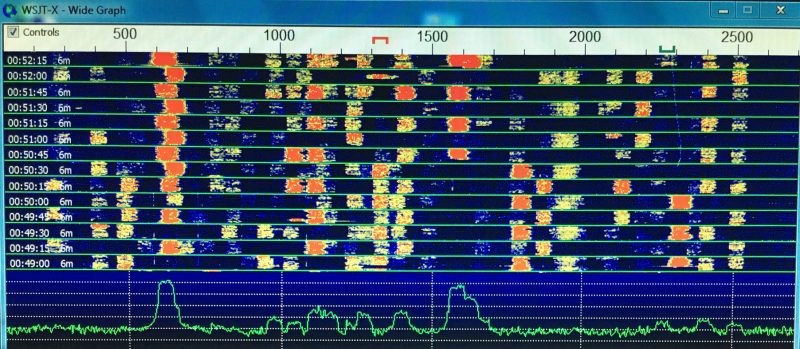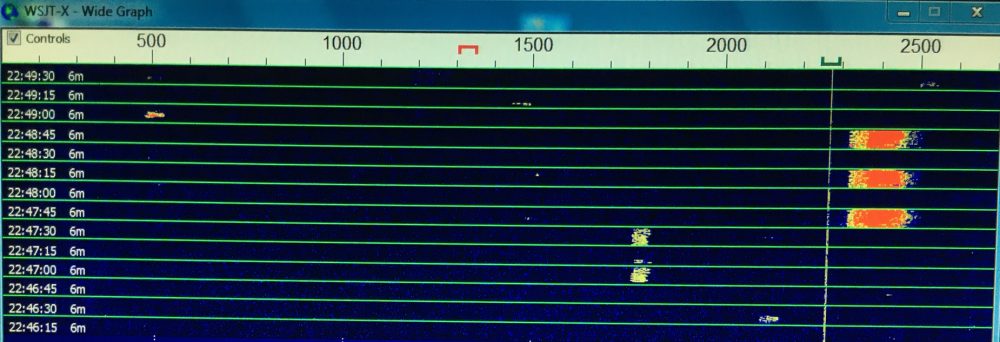 Many thanks to SWLing Post contributor, Rob, who writes:
Many thanks to SWLing Post contributor, Rob, who writes:
I have a question about the digital signals I received today during what must have been an E skip opening to the southwest.
Can you identify by the bandwidth the wide signal in one screen capture vs. the normal FT8 signals which were decoding today quite well using the 7610?
The wide signal didn’t decode in FT8 mode, but I have no idea what mode was being transmitted. Any idea?
Great question, Rob. I’m posting this because I’m no expert on timed digital mode signals. I recognize FT8, and assume this could be FT4, JT65 or similar, but the timing is identical to FT8. I’m sure someone in the Post community will solve this signal mystery in very short order!
Readers: Can you help Rob ID this wide, timed digital mode signal? If so, please comment!



It’s very difficult to identify a digital signal just from the visual on WSJT-X. It might be possible if you had brought up FLDigi and zoomed in on the signal so that we could see better the makeup of the signal.
If you run across this signal again, please make an audio recording of it. Then we could run it against many different modes to see if any will decode.
73
Bill WD9EQD
Smithville, NJ
Could be multiple FT8 signals transmitting on similar offsets with similar SNR to your station? Could cause neither to decode and would look like a wider signal. FT4 is wider but doesn’t transmit nearly as long. JS8 looks and sounds the same as FT8, and wouldn’t decode in WSJT-X. JS8 fast mode would be wider but wouldn’t transmit as long.
My guess, though, is that its splatter. Search for images on duckduckgo or google for images of “FT8 splatter” or “FT8 distortion”. You may have been getting a really huge dose of an op not monitoring ALC and spewing harmonics. It isn’t uncommon to see all kinds of freakshow wide looking FT8 signals slightly outside of the FT8 areas.
May be Contestia? The different ham radio modes have well defined windows for transmit/receive within the band so the exact frequency down to the 10 hz would be a good starting point.